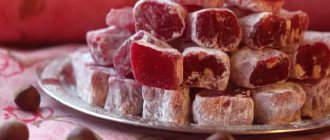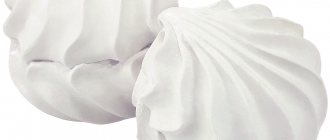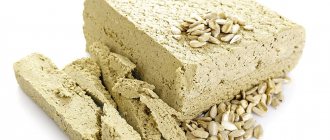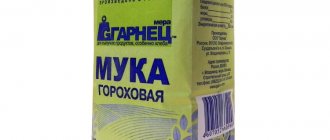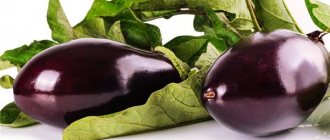Turkish delight was invented by the Turkish confectioner Bekir Efendi at the turn of the 18th century, in the city of Istanbul. In Europe, this product became known thanks to the British in the 20th century, where it is still popular under the name “Turkish Delight” dessert.
The name Turkish Delight from Arabic translation means satisfaction or gratification of the throat, from Turkish it is translated as “convenient piece”. This delicate product is still one of the most popular desserts that can be served with tea.
What is Turkish Delight
Turkish delight is a famous sweet of oriental origin, having a cubic shape. The pieces are sprinkled with coconut, powdered sugar or nut crumbs on top. Arab countries are considered the birthplace of this product.
Translated, the name of the dessert, which sounds like “Rahat-El-Lukum” in Arabic, means “delight for the throat.” This poetic term describes the state of bliss and pleasure experienced by a person who has tasted the delicacy. In Turkish, the sweetness is simply called lokum.
The benefits of Turkish delight are known not only in the East. In order to get true pleasure, when buying Turkish delight, you need to pay attention to the expiration date, calorie content and composition.
It is not known for certain when Turkish delight appeared on the territory of Turkey. There are many legends about Turkish delight in the country.
The two most famous stories are:
- One day, the Sultan, while eating his favorite desserts, broke a tooth on hard delicacies. After this incident, the court chefs were ordered to invent and prepare a treat that was softer in consistency.
- The delicacy was first made by order of the loving Sultan. It was intended for the padishah's numerous concubines.
It is known for certain that Turkish delight was made in Anatolia, even before the formation of the Ottoman Empire. The product came to Istanbul in the 18th century, in 1777. A merchant named Hadji Bekir, who came to the city, opened a small shop there where he made and sold confectionery, including Turkish delight. Residents of the city appreciated the goods offered by the shop owner. Soon rumors of amazingly tasty delicacies reached the ears of the Sultan. The ruler, having tasted the sweets, wished to see Hadji Bekir among the court confectioners.
After the death of the Anatolian merchant, the business was continued by his son Ali Muhiddin, who launched the production of Turkish delight in the state and opened a whole chain of confectionery shops in Istanbul. European travelers visiting the Sublime Porte (as the Ottoman Empire was then called in the West) took the sweets home.
The oriental delicacy, which gained recognition among Europeans, gradually spread to other countries. And confectionery shops called “Ali Muhiddin Hacı Bekir” (“Ali Muhiddin Hacı Bekr”) are still considered the best in Turkey for the production of sweet products.
Be sure to read: Ayran in Turkey: what is it, composition, calorie content, how to drink correctly, is it possible to lose weight, beneficial properties
List of allowed sweets
If you have type 1 diabetes, you can eat the following sweets:
- low-fat yogurt mixed with blueberries, raspberries, strawberries,
- bananas with chocolate syrup and glaze and almonds, ingredients must not contain sugar,
- Fruits and nuts should be consumed with caution and monitor their quantity.
The glucometer is used 2 hours after eating. If your glucose level is unacceptably high, you should contact your doctor for help. Each specialist should have data that helps patients determine which specific foods can and cannot be consumed.

Sweet foods for diabetics with low or no sugar levels are different from foods with low amounts of fat. Often low-fat foods contain too much sugar, it is necessary to limit the consumption of these foods.
Type 1 diabetics are allowed to eat a piece of cake, but the rest of the food must be in accordance with the diet, and regular exercise is required.
After eating a small piece, you must use a glucometer. Such delicacies are consumed one piece at a time and no more.
For type 2 diabetics, the diet is not so strict, but you also need to be careful when buying food. What desserts are allowed to patients:
- jelly with berries,
- custard with sweetener,
- frozen fruits,
- yogurt with raspberries,
- bananas.
Each nutritionist individually determines the diet for his patients; the list of permitted and prohibited sweets may differ for different people.
Composition and calorie content of Turkish delight
Turkey produces many varieties of Turkish delight. Various additives add variety to the product. The basic composition is always the same.
This:
- water;
- granulated sugar;
- corn starch;
- citric or tartaric acid.
During manufacturing, an additional ingredient is often added to the base.
Depending on this, the delicacy is:
- pistachio (antep fıstıklı);
- fruity (meyveli);
- coconut (hindistan cevizli);
- with hazelnuts (fındıklı);
- with walnuts (cevizli);
- lemon (limonlu);
- with rose petals (gül yapraklı).
Deep containers are used to make Turkish delight. The total cooking time is a minimum of 18 hours.
The process takes place in several stages:
- Sugar syrup is being cooked.
- Starch is dissolved in water (in a separate bowl), everything is brought to a boil.
- The two mixtures are combined, lemon juice or tartaric acid is added. The ingredients are mixed and cooked over low heat for 5 hours.
- An additional ingredient is added (depending on the desired taste of the final product).
- The mass is mixed, distributed into rectangular shapes, and left for at least 12 hours (until it cools down).
- The finished product is cut into cubes. Each piece is sprinkled with coconut, powdered sugar, cocoa powder, nut or chocolate chips.
The nutritional value of 100 grams of Turkish dessert is 350 Kcal. This is a generalized indicator of calorie content, depending on the composition of the product.
| view | number of calories |
| walnut | 370-398 |
| with rose petals | 331 |
| fruit | 410 |
| white | 293 |
Useful properties of the product

The benefits are determined by the composition, method of industrial processing and the amount of product consumed. Nut, coconut and pink delight will differ radically not only in taste and calorie content, but also in the set of useful nutrients. To determine the quality and possible effect of the product, study the composition.
For example, pistachio Turkish delight is a natural aphrodisiac. It contains specific enzymes that have a beneficial effect on libido and sexual function. Pistachio kernels are a real storehouse of vitamin B6, copper and manganese. These elements are quite difficult to obtain from plant foods, which increases the value of pistachio delight. Due to phenolic compounds, sweetness will help maintain youth and health of the body, and with the help of lutein and zeaxanthin, strengthen the bone skeleton and the functionality of the visual organs. The composition of pistachios is rich in fiber, which will help neutralize the harm of sugar and preservatives.
What is Turkish Delight made from: types

In Turkey, Turkish delight comes in different varieties. The richest selection is in the branded confectionery shops “Ali Muhiddin Haji Bekir”. You can buy sweet products with unusual flavors there.
| variety | description |
| saffron (Şafran Kaplamalı Lokumu) | A rare and expensive sweet. Contains pomegranate juice, pistachios, and topped with saffron. |
| Ginger (Zencefilli Lokum) | Rare variety. The cooking recipe involves the inclusion of ginger. The top is covered with powdered sugar. |
| eucalyptus (Sakızı Lokumu) | Made using eucalyptus resin. Considered medicinal, this species is produced only in the Republic of Turkey. |
| with dates (Hurmalı Lokum) | The composition includes pieces of date palm fruits. In Turkey, the variety is considered rare and is quite expensive. |
| coffee-chocolate (Kahveli-Çikolatalı Lokum) | Cocoa or grated chocolate is used as a topping; coffee powder is added during preparation. |
| with gold crumbs (Altın Lokum) | Classic Turkish delight, sprinkled with golden crumbs on top. Manufactured mainly for export. In Turkey itself, this type is served in luxury hotels in Istanbul and in elite confectionery shops. |
| honey (Bal Lokumu) | When preparing, honey is used instead of sugar. |
| with rose petals (Gül Yapraklı Lokum) | Pistachios are added inside and flavored with pomegranate juice or rose water. The top coating is made using candied rose petals. |
Be sure to read: Turkish dish ashura (ashure): what it is, what it is made from, ingredients for 5 servings, step-by-step preparation
Candies
Sweets with the addition of sorbitol are often prepared. This type of sweetener is called glucite or substance E 420. Sorbitol has the following effects on the human body:
- removal of bile,
- filling the body with fluoride and calcium,
- metabolism stimulation,
- positive effect on the gastrointestinal tract,
- cleaning the gastrointestinal tract from toxins.
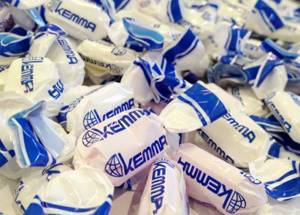
Benefit:
- replacement of natural sugar,
- helps to empty the intestines,
- used to make cough syrups,
- helps heal the liver,
- strengthens teeth,
- fills the skin with beneficial microelements,
- supports beneficial intestinal microflora.
You can combine sorbitol with dietary supplements.
If you use a sweetener in a certain dosage, nothing bad will happen; abuse is fraught with the following side effects:
- diarrhea,
- muscle weakness,
- vertigo,
- liver problems,
- swelling,
- tachycardia.
Due to the laxative effect, sorbitol should not be consumed by pregnant women, as swelling may develop. Children under 12 years old should also not eat candy containing this substance.
How to store Turkish delight, expiration date
It is recommended to store the famous Turkish dessert in a closed place, trying to avoid contact with air. If these conditions are not met, the product begins to harden and quickly deteriorates.
It is better to store the product cut into pieces wrapped in parchment paper. The use of cling film or foil is not recommended, as the dessert may become damp.
When purchasing Turkish delight as a souvenir, it is better to take the product packaged at the factory. Products purchased in bulk must be consumed as quickly as possible.
The average shelf life of sweets (subject to proper storage conditions) does not exceed 2 months. Some Turks believe that Turkish delight remains edible for 4-5 months. However, the dessert hardens and changes its taste and smell.
Description
Turkish delight is a famous oriental sweet. The composition of Turkish delight includes molasses, sugar and starch, and for flavor variety, various ingredients are added - berry or fruit juice, nuts, fresh berries, chocolate, candied fruits, vanilla, coconut flakes, etc.
Turkish delight was invented at the end of the 18th century in Istanbul, and in many ways its recipe has remained unchanged to this day. Traditionally, preparing the sweet takes two days, so preparing Turkish delight at home is problematic, but with hard work and desire, it is possible. The secret of proper preparation lies in thoroughly and constantly mixing the sweet mass and observing a long cooling period.
Is it possible to eat Turkish delight while losing weight?
One of the main ingredients of oriental treats is sugar. This causes the dessert to be high in calories. In addition, the amount of carbohydrates in 100 g of Turkish delight is quite large (about 80 grams). This delicacy is not very good for your figure. People on a diet and trying to lose weight are not recommended to abuse such foods.
The percentage of sugar contained in a traditional Turkish treat is much less than, for example, in chocolate. Nutritionists believe that when losing weight, two or three pieces of sweet “treat” will not hurt. You just need to include them in your diet in the first half of the day.
Be sure to read: Turkish vodka Raki (crayfish): what kind of drink, what it consists of, how many degrees, types, how to drink correctly
Looking for sweets. We choose the lowest calorie ones: dark chocolate, marmalade, jelly

The diet requires a radical revision of the usual diet.
This comes easy to some, they easily give up sweets and starchy foods, while others experience discomfort, especially at the first stage of proper nutrition.
In order to alleviate the condition, nutritionists advise leaving some safe goodies, carefully choosing specific foods and finding alternatives to others.
Is it possible to have Turkish delight during pregnancy?

The favorite delicacy of eastern peoples is not at all contraindicated for women preparing for the birth of a child. Just don’t overuse such sweets. It is best to try Turkish delight occasionally and in limited quantities.
During production, some types of dessert are enriched with orange, lemon, and grapefruit juice. Such products are contraindicated not only during pregnancy, but also during lactation.
Contraindications, possible harm
The main harm to people who abuse treats comes from sugar, which contains sweetness. Consumption of sugar in large quantities causes obesity. Disruptions in the functioning of the digestive organs begin. Abuse of sugar can trigger the process of diseases such as diabetes.
This dessert is contraindicated:
- people with individual intolerance to the components of the treat;
- people with pancreatic dysfunction;
- people with diabetes;
- people who are prone to obesity.
Excessive consumption of sweets causes problems with tooth enamel, and the harmony in the hair and skin of the human body is disrupted.
